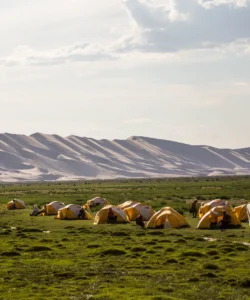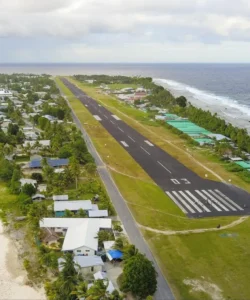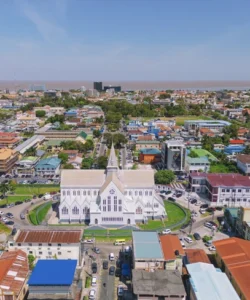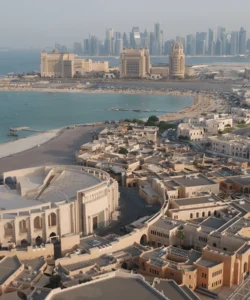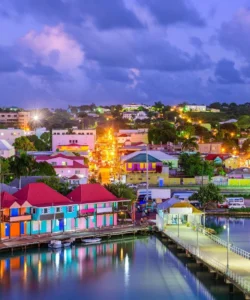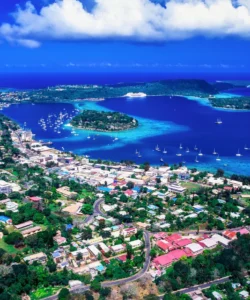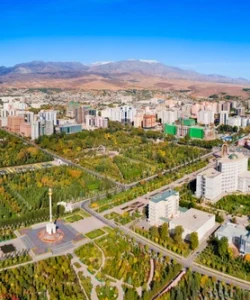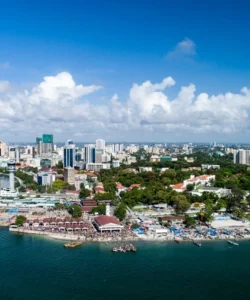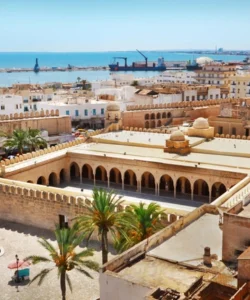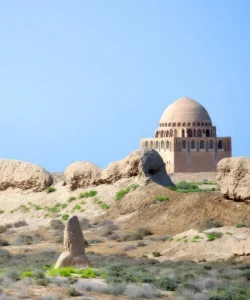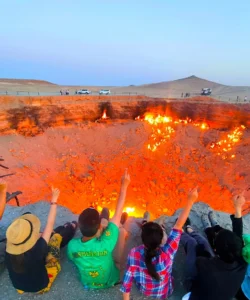Ukraine, officially Ukraine, is a country in Eastern Europe. It is the second-largest country by area in Europe after Russia, with which it shares a long border to the east and northeast. It also borders Belarus to the north, Poland, Slovakia, and Hungary to the west, Romania and Moldova to the southwest, and has a coastline along the Black Sea and the Sea of Azov to the south. Ukraine is known for its vast fertile plains (the “breadbasket of Europe”), rich history, vibrant folk culture, and significant architectural heritage.
![]()
Area: Approximately 603,628 square kilometers (233,062 sq mi).
Population: As of 2023, the population is estimated at around 37.9 million (excluding territories occupied by Russia).
Language: The official language is Ukrainian, an East Slavic language. Russian is also widely spoken, particularly in the eastern and southern regions. English proficiency varies, being more common among younger generations and in major urban centers.
Currency: The official currency is the Ukrainian Hryvnia (UAH).
Religion: The predominant religion in Ukraine is Orthodox Christianity, primarily adherents of the Orthodox Church of Ukraine and the Ukrainian Orthodox Church (Moscow Patriarchate). There is also a significant community of Ukrainian Greek Catholics (especially in Western Ukraine), Roman Catholics, and smaller groups of Protestants, Muslims, and Jews.
Capital: Kyiv is the capital and largest city of Ukraine. It is an ancient and historic city, renowned for its golden-domed cathedrals, tree-lined boulevards, and a rich cultural and spiritual heritage.
Major Cities: Besides Kyiv, other significant cities include Kharkiv, Odesa, Dnipro, Donetsk (currently under Russian occupation), Lviv, Zaporizhzhia, and Kryvyi Rih.
Attractions & Wonders: Ukraine offers a wealth of historical, architectural, and natural attractions, though current travel advisories due to the ongoing conflict should be carefully considered.
- Kyiv:
- Kyiv Pechersk Lavra (Monastery of the Caves): A UNESCO World Heritage site, one of the most sacred sites in Eastern Orthodoxy, featuring golden-domed churches, bell towers, and a complex of underground caves with mummified monks.
- Saint Sophia Cathedral: A UNESCO World Heritage site, a magnificent 11th-century cathedral known for its stunning mosaics and frescoes.
- Andriyivskyy Descent: A charming, steep cobblestone street in Kyiv’s historic Podil district, lined with art galleries, souvenir shops, and cafes.
- Independence Square (Maidan Nezalezhnosti): The central square of Kyiv, a focal point for national events and protests.
- Golden Gate (Zoloti Vorota): A reconstructed medieval gate, once the main entrance to ancient Kyiv.
- Motherland Monument: A colossal statue forming part of the National Museum of the History of Ukraine in the Second World War.
- Lviv: A UNESCO World Heritage site, a beautifully preserved city in Western Ukraine, known for its charming Old Town, Market Square, diverse architecture, and vibrant cafe culture.
- Odesa: A major port city on the Black Sea, famous for its grand architecture, the Potemkin Stairs, and its unique blend of cultures.
- Chernobyl Exclusion Zone: A unique and haunting site for guided tours, offering a glimpse into the abandoned city of Pripyat and the aftermath of the 1986 nuclear disaster (access currently restricted due to conflict).
- Carpathian Mountains: Offer stunning landscapes, hiking, skiing, and opportunities to explore Hutsul folk culture in the western regions.
- Kamianets-Podilskyi Castle: A spectacular medieval fortress perched on a rocky island, one of Ukraine’s most impressive castles.
- Tunnel of Love (Klevan): A picturesque natural tunnel formed by trees overgrowing a railway track, a popular romantic spot.
- Pochayiv Lavra: One of the largest and most significant Orthodox monasteries in Western Ukraine.
- Kharkiv: Ukraine’s second-largest city, known for its large squares, parks, and Soviet-era architecture.
- The Danube Delta: Part of the vast Danube Delta wetland, shared with Romania, providing a rich ecosystem for birds and wildlife (in Ukraine’s southwest).
Architecture: Ukrainian architecture is a rich tapestry, reflecting its long history and diverse influences, including Byzantine, Slavic, Polish, Russian, and Soviet styles:
- Byzantine/Kievan Rus’ (Old Rus’): Early medieval churches and cathedrals with distinctive domes (e.g., Saint Sophia Cathedral, Golden-Domed St. Michael’s Monastery, Kyiv Pechersk Lavra).
- Ukrainian Baroque: A distinctive 17th-18th century style characterized by exuberant ornamentation, often with a more restrained, lighter touch than Western European Baroque (e.g., many churches in Kyiv, Lviv).
- Wooden Churches (Carpathian Region): Unique and often beautiful wooden churches, some of which are UNESCO World Heritage sites, reflecting distinct regional styles.
- Neoclassical: Prominent in 19th-century public buildings and some residential areas, especially in Odesa and parts of Kyiv.
- Art Nouveau: Found in some early 20th-century buildings in cities like Lviv and Kyiv.
- Constructivism: Early Soviet avant-garde style.
- Stalinist Empire Style: Grand, monumental, and often ornate buildings from the mid-20th century, particularly in Kyiv and Kharkiv.
- Soviet Modernism: Later Soviet-era buildings often emphasized functionalism and concrete structures, found across urban areas.
- Contemporary: Modern Ukrainian architecture includes new residential and commercial developments, often blending modern designs with existing urban landscapes.
Roads: Ukraine’s road network varies significantly in quality. Major highways connecting large cities (e.g., Kyiv-Lviv, Kyiv-Odesa) have seen improvements in recent years and are generally in decent condition. However, many secondary and rural roads can be in poor condition with potholes. Driving can be challenging in some areas, especially outside major routes. Due to the ongoing conflict, many roads may be damaged, restricted, or unsafe.
Hotels: Ukraine offers a range of accommodation options, primarily concentrated in major cities like Kyiv and Lviv. You’ll find international hotel chains, local hotels of varying quality, and numerous hostels and apartments. Outside the major cities, options become more limited but include local hotels, guesthouses, and rural stays. Due to the ongoing conflict, availability and safety of accommodation may be severely impacted, especially in eastern and southern regions.
Restaurants: Ukrainian cuisine is hearty, flavorful, and diverse, with strong influences from Slavic, Russian, Polish, and other Eastern European culinary traditions. It features ingredients like potatoes, grains, various meats (pork, beef, chicken), and vegetables.
- Kyiv and Lviv offer vibrant culinary scenes, from traditional Ukrainian restaurants and pubs to fine dining establishments and a wide array of international cuisines.
- Traditional Ukrainian Dishes:
- Borscht (Борщ): The national dish – a rich and vibrant beetroot soup, made with various vegetables and meat, often served with sour cream (smetana) and pampushky (garlic bread rolls).
- Varenyky (Вареники): Dumplings with various fillings, both savory (potatoes, mushrooms, cabbage, meat, cheese) and sweet (cherries, berries), usually served with sour cream.
- Holubtsi (Голубці): Cabbage rolls filled with minced meat and rice, simmered in a savory sauce.
- Deruny (Деруни): Potato pancakes, often served with sour cream.
- Salo (Сало): Cured pork fat, a traditional and often revered Ukrainian snack, usually served thinly sliced with bread and garlic.
- Pryanyky (Пряники): Gingerbread cookies, often decorated.
- Kyiv Cake (Київський торт): A famous layered cake with meringue, nuts, and buttercream.
- Kompot (Компот): A sweet, non-alcoholic fruit drink.
- Horilka (Горілка): Ukrainian vodka, often infused with honey, chili, or herbs.
- Pork, beef, and chicken are common meats.
- Soups and stews are a fundamental part of the diet.
- Fermented products like pickles and sauerkraut are also popular.

